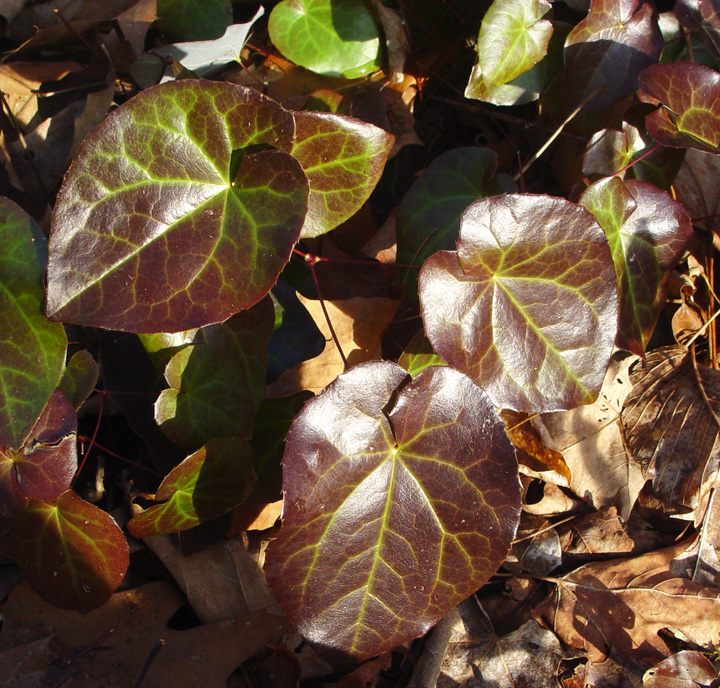
January 15, 2022
2021 was a blockbuster year for Epimedium sales. Even though it was my last year for mail order and my aim was to decrease my inventory, I ended up propagating vast numbers of plants just to keep up with demand. Now I know why those furniture stores advertise their “Going Out of Business” sales year after year! They are definitely on to something.
I plan to sell the bulk of my remaining inventory of potted epimediums in-person during my Open Nursery Days, May 4-22, Covid permitting. I have listed those varieties that I have in larger quantities in the Web Catalog. You may pre-order these for pick up during my Open Nursery Days. Other varieties that I have in small quantities are not listed, but will be available for sale as supplies last. I am accepting cash and check only at these sales. I will also be participating in a few other specialty plant sales in the region this year before I discontinue retail sales.
For those of you too far away to visit, I’ve compiled a list of mail-order sources that offer a good selection of epimediums. I’ve also listed a few that sell on-site only. This is far from a complete list, but they are sources which offer a wider variety than is generally available. Many of them have been customers over the years. Please feel free to let me know of other sources that you think I should include.
So far this winter we’ve had a roller coaster pattern of very warm and very cold temperatures, but very little snow. I took a walk around the nursery shortly after the new year to see how the evergreen epimediums were faring. Here’s what I found in my Massachusetts garden (USDA hardiness Zone 5b).

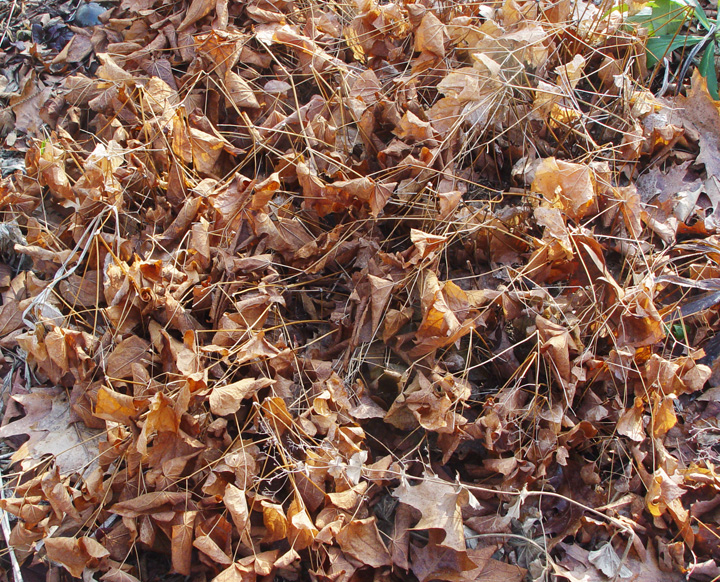
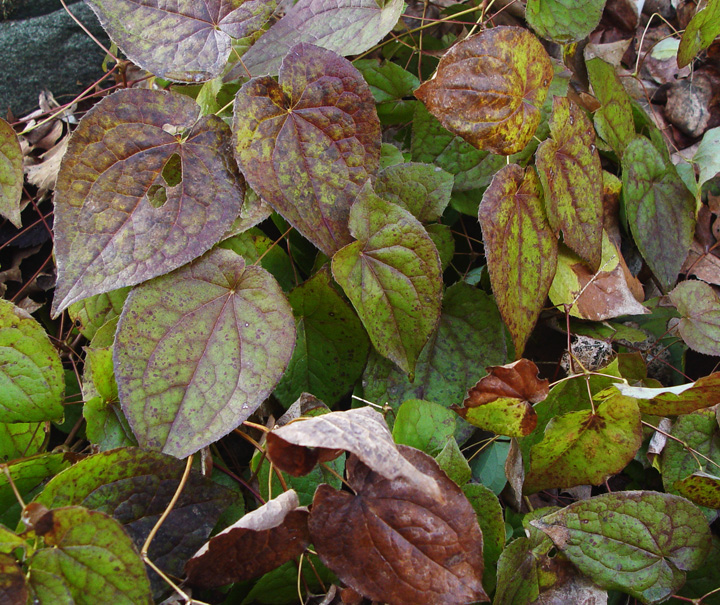
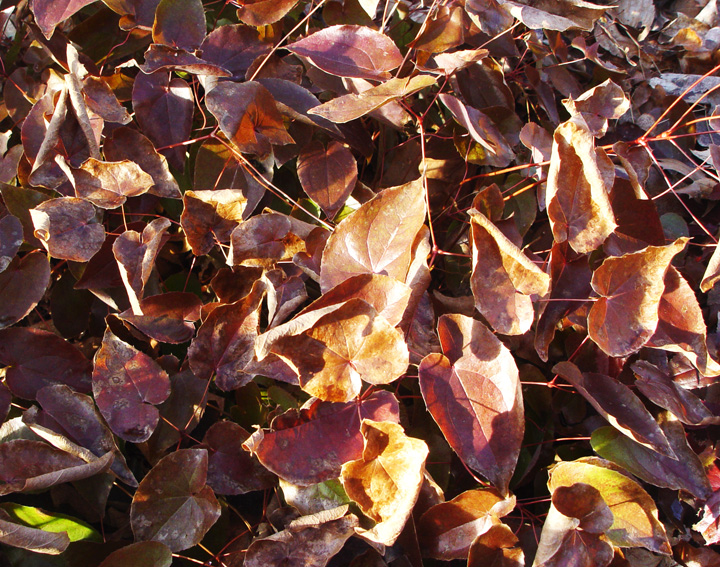
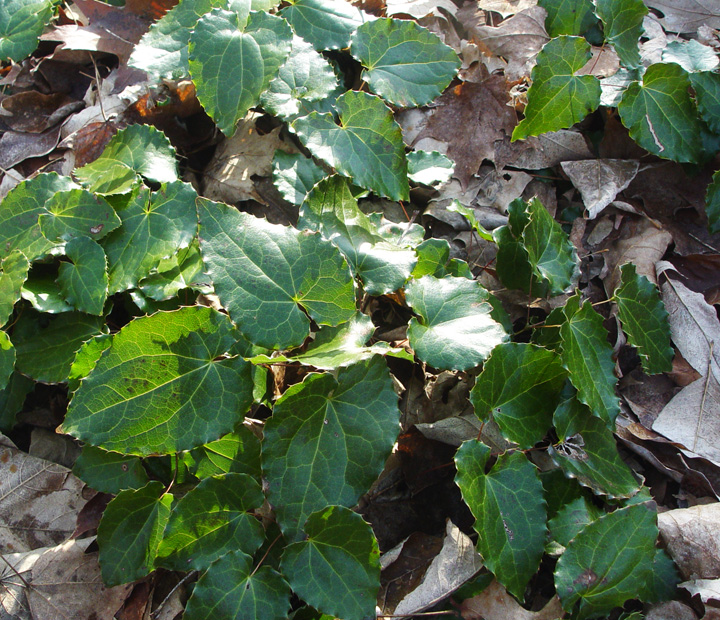
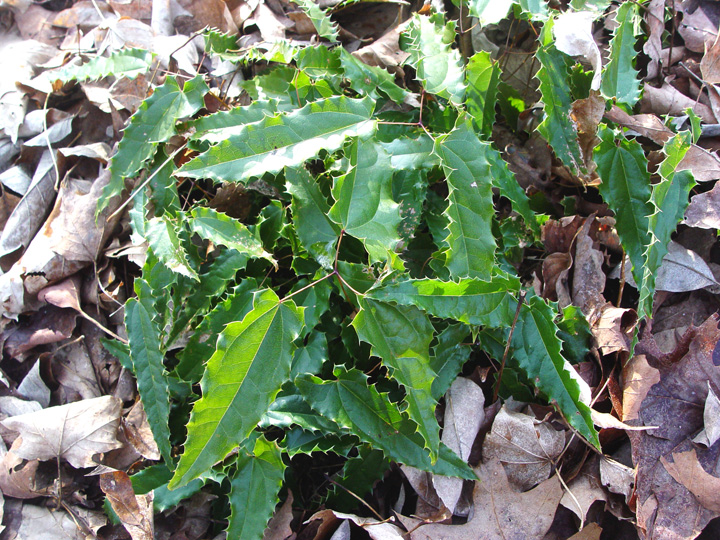
Unless still attractive in spring, remove the previous year’s leaves before the new growth emerges to avoid damaging the tender young stems. If you leave cutback too long, or just don’t have the time, leaving the previous year’s growth intact can encourage the growth of larger/taller plants with more robust leaves and flower scapes. The new growth typically extends up and above the old growth, and if desired, the latter can be removed later, after the new growth matures.
If you would like to include some evergreen Epimediums in your garden, check out Find Plants/By Growth & Culture/Evergreen on the home page. There you will find a list of good candidates that will add color and texture to your winter landscape.
Karen Perkins